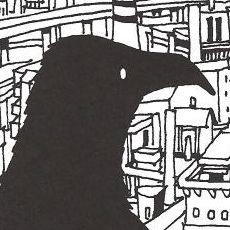Tag: horror
-
Basking in the inferno of Cloverfield, remembering Blue Gender
/
/ ReviewsRead More →: Basking in the inferno of Cloverfield, remembering Blue GenderHead-spinning, stomach-turning and mind-racing are a few of the adjectives I’d choose to describe how I felt when I stumbled out of the cinema last night, having just suffered through Cloverfield. To say I’d been looking forward to this film would be an understatement, and even though I’d only discovered its baffling trailer in early…
-
Spiralling into insanity, looking at Junji Ito’s horror manga Uzumaki
Read More →: Spiralling into insanity, looking at Junji Ito’s horror manga UzumakiI’ve been reading a lot of manga lately. In the past, I’d go through brief fits of reading the stuff, but it always felt temporary, like a fling while my romance with anime hit the buffers. This time, it’s totally different; I’m ready to devour as much as I can find. By and large, anime…
-
Creepy horror manga? The Enigma of Amigara Fault is the answer
Read More →: Creepy horror manga? The Enigma of Amigara Fault is the answerHalloween is fast approaching and it’s time to indulge in some frightful Japanese horror. Sadly, it’s not a genre that translates well to anime and manga, but having recently discovered the abnormal works of manga-ka Junji Ito, there may well be hope for us yet. This time I’m talking about the claustrophobic “Enigma of Amigara…
-
The hyperbole of Mononoke
/
/ ReviewsRead More →: The hyperbole of MononokeHaving been seduced by its eccentric visual style and the positive word-of-mouth, this past weekend was spent haplessly indulging in seven episodes of Mononoke’s surreal feast. To you, I present these humble findings. Mononoke is good.
-
Demonic rumbles as claymores get squished in episode 21
/
/ ReviewsRead More →: Demonic rumbles as claymores get squished in episode 21I’m really digging Claymore at the moment and each episode is ending on the kind of gut-wrenching cliff hanger that so tempts me to gorge on manga spoilers. Episode 21 is no different; Ligardes is one of the coolest awakened beings yet — his intimidating part-lion transformation perfectly emphasizes his quite unfathomable strength and speed;…
-
The end of Death Note: a poison, creating wicked hearts
/
/ ReviewsRead More →: The end of Death Note: a poison, creating wicked heartsDeath Note is a “… poison, creating wicked hearts”, said the concerned prudes at Chinese schools after some ‘corrupted’ kids were discovered to be using their home-made murder pages to curse fellow students. This was back in 2005; the first time I’d heard of the now famous Death Note. Since then, I’ve always been interested…
-
Claymore – Searching for humanity in a violent world
/
/ ReviewsRead More →: Claymore – Searching for humanity in a violent worldI’m really enjoying watching Claymore at the moment (as of episode 4), yet oddly, I’m finding it hard to pin down exactly what I like about it. It’s probably the setting; I just really like the European medieval period — a time when any person; strong in arm and sword in hand, could conquer and…
-
Death Note – 15 – It's been all sorts of fun, L
/
/ ReviewsRead More →: Death Note – 15 – It's been all sorts of fun, LIt’s around about now that we realise Death Note is becoming more than a very good anime series. It’s becoming one of those “OMFG-WTF-CLIFFHANGER!?!” types. I can feel the hysteria surging within me. 15 episodes in and the twists and turns of the story are still as unpredictable as ever. Watching it makes me a…
-
Berserk – 3 – The Hawk that soars ever higher
/
/ ReviewsRead More →: Berserk – 3 – The Hawk that soars ever higherThe moustache twiddling decadence caused by extended aristocracy is an issue central to the narrative of Berserk. Regardless of social standing, we all like to dream that we are destined for greatness, to achieve something worthwhile. Aristocracy exists to elongate wealth and protect respect no matter what the cost, and that often includes suppressing the…
-
Red Garden – Only in death do they find true happiness
/
/ ReviewsRead More →: Red Garden – Only in death do they find true happinessI’ve been an advocate of Red Garden since the first episode, but until this past weekend I hadn’t seen beyond episode three. Red Garden isn’t easy to watch – if the characters aren’t paralysing my brain with screaming, tearful grief, they start singing instead. I like that the show is trying something different with the…
